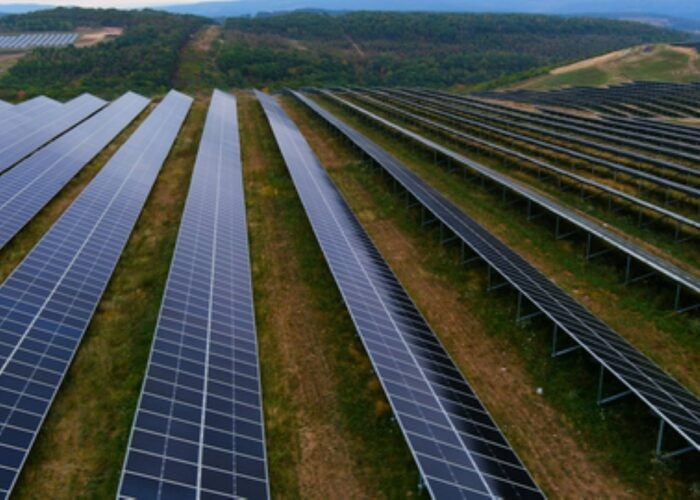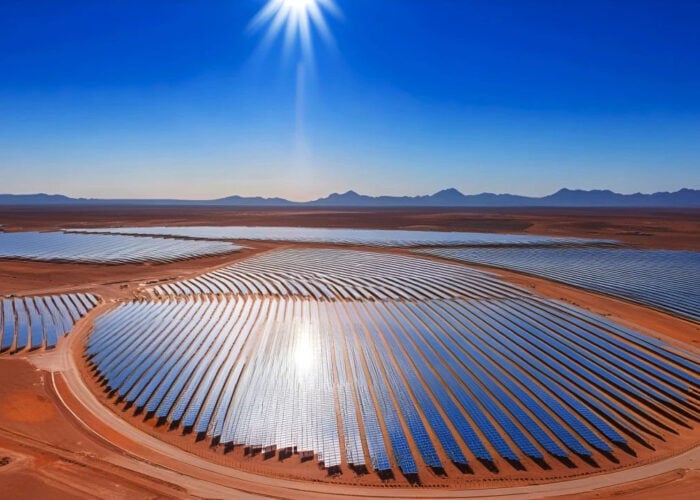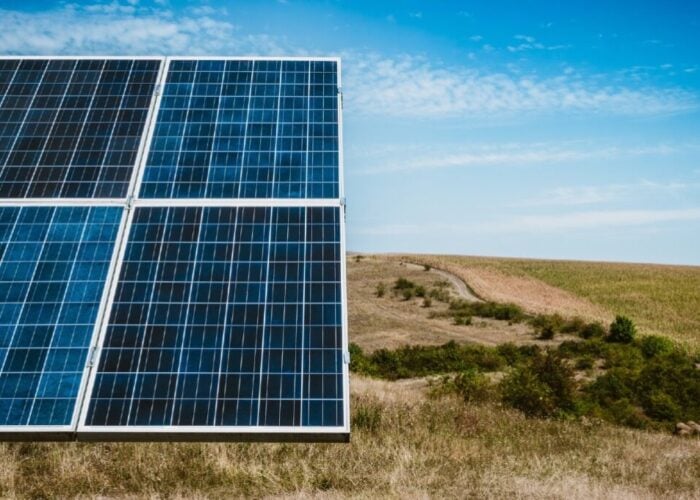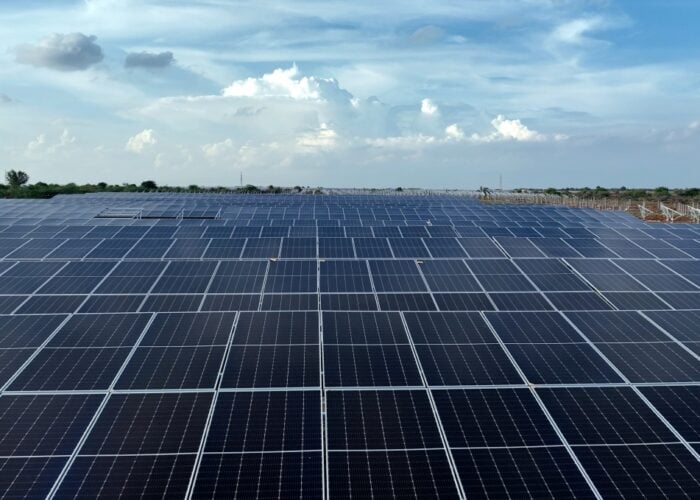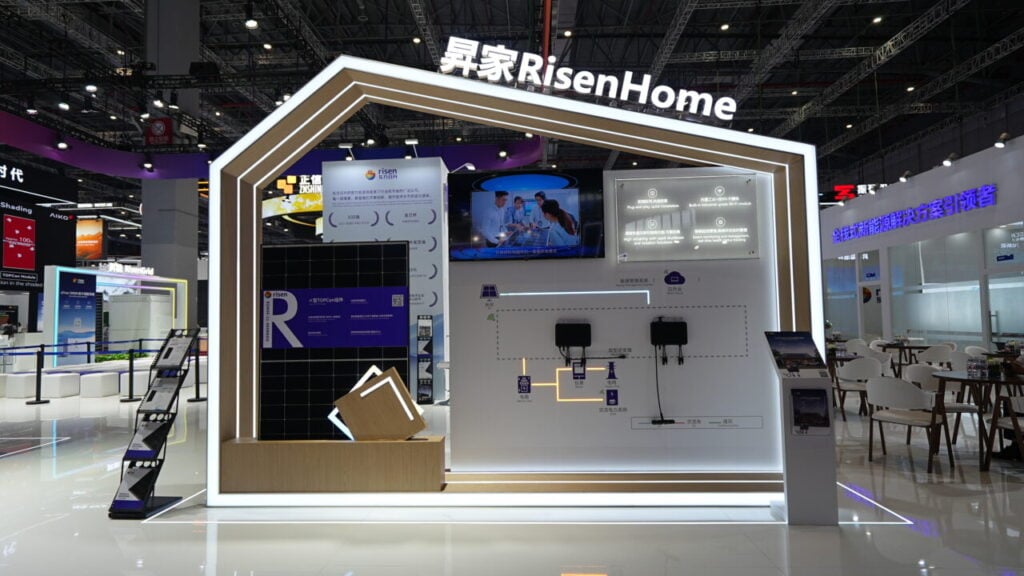
On the sidelines of the recent SNEC expo in Shanghai, Risen Energy’s head of overseas sales, Bob Hao, spoke to us about the company’s latest range of integrated energy solutions and recent developments in HJT module technology.
PV Tech: What were the highlights among the products exhibited at this year’s SNEC, in both the module and storage areas?
Try Premium for just $1
- Full premium access for the first month at only $1
- Converts to an annual rate after 30 days unless cancelled
- Cancel anytime during the trial period
Premium Benefits
- Expert industry analysis and interviews
- Digital access to PV Tech Power journal
- Exclusive event discounts
Or get the full Premium subscription right away
Or continue reading this article for free
Bob Hao: Risen Energy unveiled its Full-Stack Renewable Energy Solutions at the 18th SNEC PV Power Expo, integrating modules, inverters, energy storage and smart energy management platforms for three distinct application scenarios.
The residential solution features high-efficiency n-type modules, compact Luvit microinverters and stackable energy storage systems. This offering is engineered to maximise safety, convenience and energy efficiency for homeowners. Built-in Wi-Fi connectivity and rapid shutdown functionality provide smarter, safer home energy management.
The commercial and industrial solution is designed for industrial parks, factories and other commercial environments. The hybrid system integrates PV, energy storage and diesel generation under a unified platform, all managed via the Risen Cloud system. This enables real-time, end-to-end digital control of generation, storage, usage and load balancing, delivering meaningful reductions in energy costs and improved operational visibility.
The utility-scale solution is powered by the high-density eTron liquid-cooled energy storage system (6.9MWh per unit). This utility-scale solution delivers a 37% boost in energy density and a 23% improvement in space efficiency. Coupled with AI-driven cloud monitoring, the system helps developers and grid operators maximise output and return on investment.
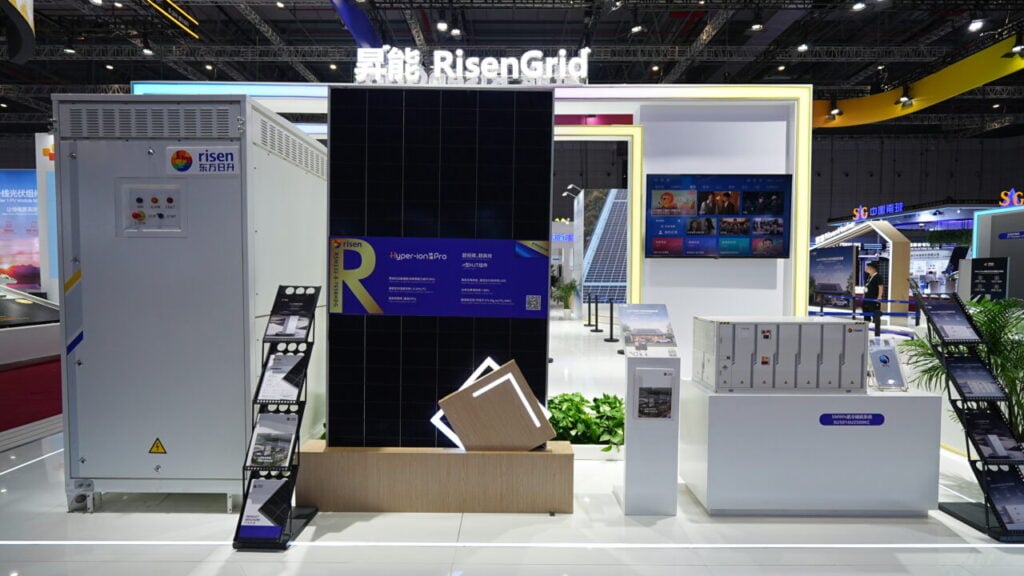
Taking modules first, how is your current pipeline of heterojunction (HJT) projects progressing? What have been the major achievements since last year’s SNEC?
As a leader in HJT technology among the world’s top 10 PV companies, Risen Energy has been deeply committed to HJT innovation since 2018, accumulating leading expertise in both technology development and mass production.
Since last year’s SNEC exhibition, Risen Energy has achieved multiple groundbreaking milestones. On 15 October 2024, the HJT module Hyper-ion was upgraded to Hyper-ion Pro, which delivers over 730Wp in mass production for the first time. Hyper-ion Pro integrates cutting-edge technologies such as UV down-conversion encapsulation film, high-mobility target material and stencil screen printing, achieving a power range of 720-740Wp, a conversion efficiency of 23.2%-23.8%, and a bifacial factor of 90%. These advancements fully demonstrate our technological prowess and innovation in the HJT field.
With an ultra-low temperature coefficient of -0.24%/°C and high bifaciality, Hyper-ion Pro delivers over 3% more power generation compared to PERC and TOPCon modules in ground-mounted power plants. Currently, Hyper-ion Pro has entered mass production and delivered in lots of projects.
Moving forward, Risen Energy will continue to invest in R&D, driving HJT technology toward higher efficiency and lower costs, further contributing our strengths to the global clean energy transition.
Given the competition from other PV technologies, how is Risen planning to maintain its technological leadership in the module sector?
Faced with competition from BC and TOPCon technologies, Risen Energy will continue to prioritise HJT as its core strategy. By leveraging its Full-Stack Renewable Energy Solutions, globalised production capacity and self-sufficient supply chain, the company aims to develop differentiated products, build an ecosystem of technological barriers and consolidate its leadership in the renewable energy sector.
What specific measures is Risen taking to optimise its capacity layout against the backdrop of the current overcapacity in the PV industry?
We are phasing out outdated production capacity, optimising resource allocation and implementing make-to-order production.
How has Risen performed in overseas markets during the first half of this year? Are you planning to introduce any new strategies to increase market share in emerging overseas markets?
We want to transition from focusing on PV modules and energy storage systems to promoting our Full-Stack Renewable Energy Solutions.
If we looked ahead to this time next year, what goals would you like to have achieved?
In utility-scale ground-mounted power plants, our 730Wp+ HJT modules, paired with liquid-cooled energy storage systems, enhance PV-storage peak-shaving efficiency by 15%, achieving a record-low levelised cost of energy of RMB0.18/kWh. This supports integrated operations of self-consumption, surplus power feeding and grid frequency regulation in utility-scale projects.
In C&I parks, the PV modules + smart inverters + C&I energy storage combination delivers triple value to reduce annual energy cost by 20% per park: self-consumption, minimizes electricity bills; peak-valley arbitrage boosts revenue; grid-return subsidies maximize return on investment. Virtual power plant (VPP) technology further enhances profits through grid demand response participation.
On residential rooftops, the fully integrated n-type modules + home energy storage system + Risen Cloud energy management app achieves >80% self-consumption, meeting household and EV charging needs. The lifetime carbon reduction exceeds 50 tonne.


